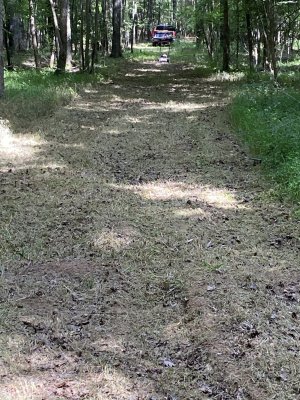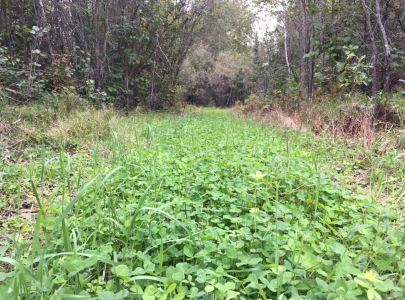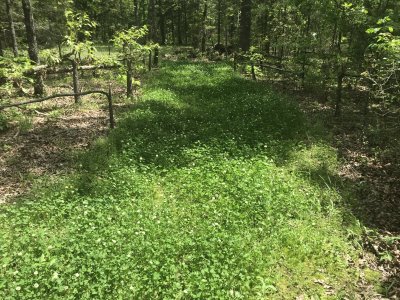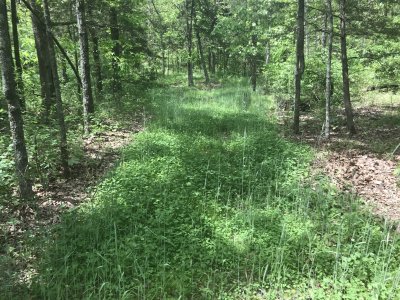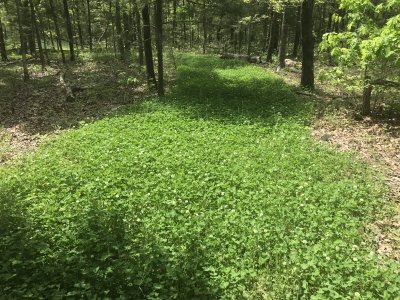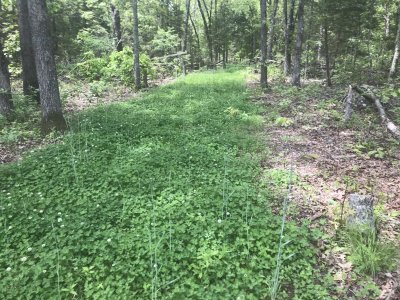archer8030
A good 3 year old buck
Good morning, all. This may have been discussed here (numerous times, I'm sure) but being a newbie, I ask for your patience and tolerance as I stumble through this site.
I live and hunt in SC. I have begun my first attempt at creating a honey hole food plot. I don't own or have access to planting equipment or land-working equipment. The arsenal of equipment at my disposal consists of a lawn mower, backpack spray, rakes and an over the shoulder seed spreader. I have done a fair bit of research and I believe I've picked a seed blend I'm going to plant and I've begun prepping the site. It's an old logging road that is in great condition (not all rutted up). The area I'll be planting is roughly 10' x 225'. When I first started, the lane had about 10"-12" of native broadleaf grasses growing on it but it wasn't very thick. So far, I have burned those grasses down using Glyphosate and after everything had died off, I mowed it very tight using a push mower but now I'm indecisive about what to do next.
I've read conflicting information about what to do with the thatch. I've read to completely remove all of the thatch to fully expose the seed bed and I've read that I should leave the thatch. It's not a very thick layer of thatch (1/4"-1/2"). I won't be planting until mid-September so I have some time to decide but I could use some guidance on what to do with the thatch... clear it or leave it. Also, I was planning on applying a soil amendment (going with PlotStart) so another question would be, if I decide to leave the thatch, how will that affect the application of my soil amendment?
I have attached two pictures of the plot (in the making). These pictures were taken standing in the middle of the plot, looking back towards either end. It is right after I mowed so the thatch looks thicker than it actually is right now and any and all vegetation growth has stopped.
I appreciate any guidance and feedback y'all are willing to share.
I live and hunt in SC. I have begun my first attempt at creating a honey hole food plot. I don't own or have access to planting equipment or land-working equipment. The arsenal of equipment at my disposal consists of a lawn mower, backpack spray, rakes and an over the shoulder seed spreader. I have done a fair bit of research and I believe I've picked a seed blend I'm going to plant and I've begun prepping the site. It's an old logging road that is in great condition (not all rutted up). The area I'll be planting is roughly 10' x 225'. When I first started, the lane had about 10"-12" of native broadleaf grasses growing on it but it wasn't very thick. So far, I have burned those grasses down using Glyphosate and after everything had died off, I mowed it very tight using a push mower but now I'm indecisive about what to do next.
I've read conflicting information about what to do with the thatch. I've read to completely remove all of the thatch to fully expose the seed bed and I've read that I should leave the thatch. It's not a very thick layer of thatch (1/4"-1/2"). I won't be planting until mid-September so I have some time to decide but I could use some guidance on what to do with the thatch... clear it or leave it. Also, I was planning on applying a soil amendment (going with PlotStart) so another question would be, if I decide to leave the thatch, how will that affect the application of my soil amendment?
I have attached two pictures of the plot (in the making). These pictures were taken standing in the middle of the plot, looking back towards either end. It is right after I mowed so the thatch looks thicker than it actually is right now and any and all vegetation growth has stopped.
I appreciate any guidance and feedback y'all are willing to share.
Attachments
Last edited:

